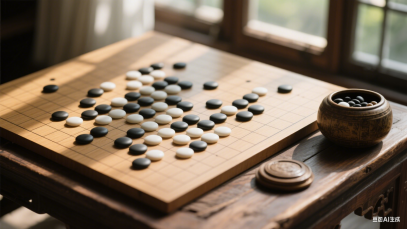
Go, is a captivating board game with over 4,000 years of history, originating in China. Known globally as weiqi, it remains widely played today. Across East Asia, particularly in Japan, Korea, and China, it enjoys exceptional popularity, with professional players competing for significant prizes. While its basic rules can be understood quickly, true mastery requires a lifetime of dedication.
1.1. Go’s basic rules are characterized as ______.
A complex but fair
B quick to learn
C difficult to master
D historically deep
解析:选B。B 细节理解题。首段末句“basic rules can be understood quickly”直接对应B项(易学)。C项(难精)是掌握程度而非规则特点,属偷换概念;D项(历史深厚)是背景信息,属答非所问。故选B。
2.2. What must players accept during a game?
A Fixed strategies.
B Sudden rule changes.
C Shifting control.
D Immediate wins.
解析:选C。C 推理判断题。由第二段中的“control...may change repeatedly”(控制权可能反复变化)推出C项(局势变化)。A项(固定策略)与“flexible”矛盾,属颠倒黑白;B项(规则突变)原文未提,属无中生有。故选C。
3.3. “Good shape” describes a move’s ______.
A visual effect
B strategic quality
C speed advantage
D traditional origin
解析:选B。B 词意指代题。根据“Good shape“定位至第三段中的“intellectual challenge”和“high praise for a move”可知,“good shape”用于评价策略水平(B项)。A项(视觉效果)是棋盘图案特点,属张冠李戴;D项(传统来源)在设备部分提及,属文不对题。故选B。
4.4. What is the main purpose of the text?
A To compare Go with chess.
B To explain Go’s rules.
C To promote Go globally.
D To introduce Go’s charm.
解析:选D。D 主旨大意题。全文从围棋的历史、规则、益处、受众等方面展开,强调其魅力与价值,而非单纯对比(A)、解释规则(B)或推广(C)。选项D “介绍围棋的魅力”符合全文主旨;A “与国际象棋对比”仅为第二段细节,属于以偏概全;B “解释规则”和 C “全球推广”非文章核心目的。故选D。